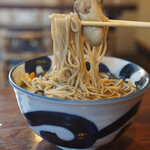
そば所 よし田
sobadokoroyoshida ◆ そば所 よし田
3.47
Ginza
「Soba」
1,000-1,999円
--
東京都中央区銀座6-4-12 KNビル 2F
Photos
(20)

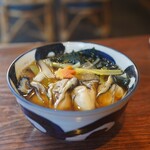
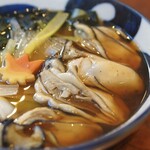
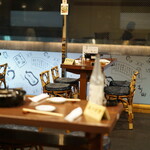
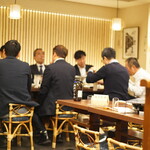
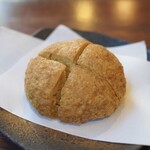
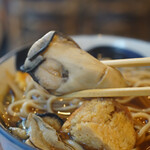

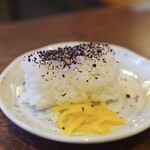

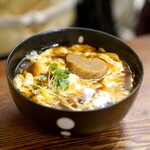
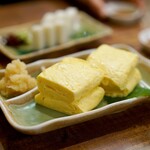
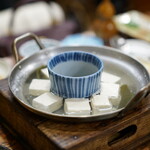
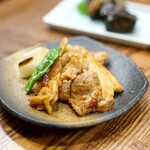
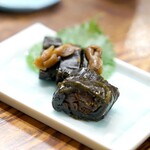
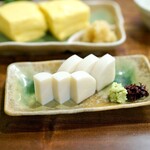
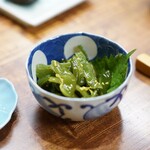


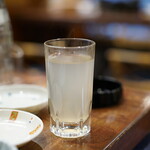
Details
Reservation Info
can be reserved
Payment Method
Cards accepted
(Diners, JCB, AMEX)
Electronic money is not accepted.
Number of Seats
62 seats
Private Dining Rooms
None
Smoking and Non-Smoking
No smoking at the table
Parking
None
Comments
(21)
しーしし
4.00
Established in 1885 (Meiji 18), this restaurant continues to offer a dish called "Croquette Soba" using a recipe that has been passed down for 138 years. Priced at ¥1250, this dish has a refined taste without the typical junk food feel. The centerpiece of the dish is a perfectly round croquette floating in a bowl adorned with white leeks. The croquette itself is made from ground chicken mixed with grated nagaimo (Chinese yam) and egg, then lightly fried to create a "chicken dumpling fry" with a unique texture reminiscent of thick fried tofu or tofu hamburger. Interestingly, this croquette dish was created as a more affordable alternative to the original croquette made with potatoes, which were considered a luxury item at the time. The broth is made from a kombu base with added bonito flakes for a subtle umami flavor, enhanced with a touch of spiciness. The soba noodles swimming in the broth are square-cut and thin, providing a simple yet satisfying taste. The dish is garnished with finely chopped white leeks and shichimi pepper, adding a light touch of flavor. During the winter season, the restaurant also offers a popular "Oyster Soba" and a nighttime-exclusive "Nabe" dish. The restaurant, now run by the current female owner, has a long history of serving quality food and is considered a renowned establishment in Ginza. The hidden gem "Nest Mound" dish is also worth trying. After closing their original location in Ginza 7-chome, the restaurant reopened on the second floor of a building on Sukiya Street in Ginza after about a year, carrying on the tradition of over 130 years. The origin of the restaurant's name is said to be linked to a tea master from the Genroku period named Yoshida Jishuken, or possibly from the former Yoshiwara district where nightingale soba was once served. During lunchtime, customers are treated to complimentary rice ball snacks. Overall, the dining experience was delightful. Thank you for the meal.
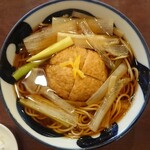
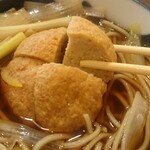
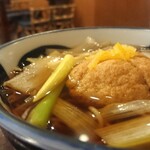
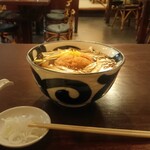
YAZw
3.10
Hidden gem soba restaurant in Ginza. Ordered the specialty "Croquette Soba" dish. The broth has a classic Edo-style flavor. Instead of a typical croquette, it had a unique thick fried tofu-like topping. Interesting texture. The restaurant mainly has table seating and is spacious. They also serve alcohol. A great place for dining alone.
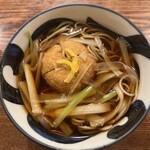

蓼喰人
3.00
On a Saturday afternoon, I went out near Sukiyabashi in Ginza and was thinking about where to have lunch on my way back. Despite the scorching heat, there were quite a few people, including inbound tourists, out and about. Many popular restaurants had long lines of people patiently waiting in the sweltering sun. I wanted to avoid walking around too much, so I decided to go to a traditional soba restaurant called "Kibachi-kai" in Ginza, which has been around for a long time. I hadn't visited this place since it moved to its current location. The restaurant is located on the second floor of a building, and although it has a good number of seats, the entrance can be a bit hard to find. You have to take an elevator a little further in and then you'll see the noren curtain hanging at the back. Despite it being lunchtime, there were no other customers at this time, probably due to the restaurant's inconspicuous location. I was greeted by the veteran waiter Hanaban, who welcomed me to sit at a four-person table. The restaurant mainly caters to diners, so there were menu stands on the tables with options for soba and rice bowl sets. It was a bit unusual for a soba restaurant in Ginza, but I was there for soba and sake, so I started with a bottle of beer (I chose "Sapporo Black Label"). As soon as they realized I was there to drink, they brought me a menu booklet with various dishes, even during lunchtime. I ordered two items from the menu: "Edamame," which was served fresh and carefully selected, and "Anago Tempura Plate," which included anago eel, vegetables (bell pepper, eringi mushroom, shishito pepper), as well as tachiuo fish and fried soba noodles tied in knots. The tempura was cooked in the traditional Edo style, slightly crispy on the outside, and the main anago eel was quite large and thick, providing a satisfying taste. The vegetables retained their individual flavors, and the crispy texture of the fried soba noodles was enjoyable. I ate them with a rich tempura dipping sauce and grated daikon radish, but I found that the sauce was not enough halfway through the meal. When I mentioned this to Hanaban, they brought me a pitcher of warm sauce, which I appreciated. For sake, they simply had "Japanese Sake" listed without any specific brands. I chose "cold sake," which they explained came in a 300ml bottle that I could open myself. I enjoyed the familiar taste of "Kikumasamune" sake with the tempura as my appetizer before the soba. For the soba order, I decided to try something different and asked for the "Gomoku Soba," which was inspired by the colorful toppings of Tokyo's Chinese-style ramen. It resembled the traditional "Okame" soba with various toppings like fried tofu in sweet and savory sauce for "kitsune" soba, thin slices of kamaboko, bamboo shoots, wheat gluten, narutomaki fish cake, and nori seaweed. Instead of the usual tamagoyaki omelette and shiitake mushrooms, there was a piece of chicken thigh and a quail egg at the bottom. It arrived quickly, and I was impressed by the variety of toppings on the soba noodles.
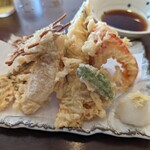
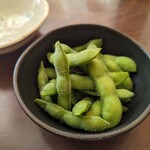
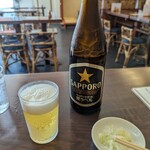

Cream81225②
1.00
First visit. I ordered the hand-made noodles with a 2:8 ratio as recommended by the staff, but they said there were only a few hand-made noodles left, so I ordered the tempura soba with two slices of tempura. After a while, it was brought to me. Huh? It looks cloudy and the noodles seem to be stretched, not hand-made or 2:8 ratio. It feels more like 6:4 ratio and the noodles are overcooked and mushy. The broth is light and sweet, diluted soy sauce, lacking depth. It seems they didn't use bonito soy sauce, so it's not rich. The tempura was a small kakiage with one piece. It looks like a kakiage, but it only had two small shrimp and the rest was batter. It's a matter of personal taste, but I couldn't eat it, so even though I ordered two servings, I only ate half of one slice. The bonito tataki was delicious.

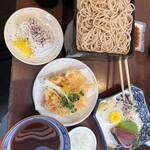
Jerid
3.50
This is a soba restaurant in Ginza. It seems to have opened in the 28th year of the Meiji era. Their specialty is croquette soba. When I visited at night, the restaurant was bustling. I ordered the croquette soba for 1250 yen and the curry soba for 1150 yen. The homemade soba broth was delicious with a rich flavor. The croquette was made with ground chicken, yam, and egg mixture, then deep-fried to a fluffy texture. The yuzu on top added a nice accent, along with the green onions, creating an elegant taste. The soba itself was like that of a regular soba restaurant. The curry soba had an orthodox taste that curry soba lovers would appreciate. The curry broth was thick, so be careful of splashing. Overall, I think it was delicious. It's a longstanding soba restaurant in Ginza where you can casually drop by.
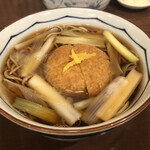
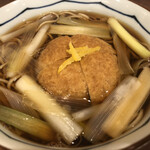
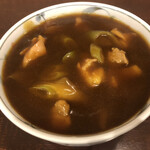
お麩じぃ
3.50
This long-established soba restaurant, founded in 1885, relocated near Corridor Street seven years ago. This time, I tried the kaki egg soba, where the sauce of the egg and broth soaked into the konjac, and it was incredibly delicious. The recommended ginger helped to enhance the overall flavor. The complimentary onigiri was a nice touch. I also enjoyed the fu (wheat gluten) that was served.
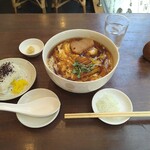
sen_ito
4.50
I take my lover with me. This space, this soba. It is a blissful moment. Of course, in terms of the deliciousness of soba, the nearby restaurant might be tastier. But this soba shop has a charm that surpasses such things.
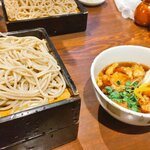
ノリさん0426
3.80
In April, it's "Actress Food Collection Strengthening Month," so I went to Ginza to try the "Curry Soba" for ¥1150. As a fan of soba noodles, I tend to lean towards soba even with curry. I also added a croquette for ¥550 and waited for my order. When it arrived, I noticed the croquette was smaller than expected, but it was meaty and tasted like a hamburger. I added some green onions as a topping and enjoyed it. For dessert, I had a complimentary rice ball which turned the curry into a risotto-like dish. I also noticed the "soba dishes" menu on the wall, which piqued my interest. Overall, it's a cozy place where you can enjoy a quiet meal rather than a lively gathering.
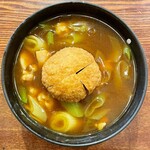
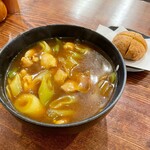
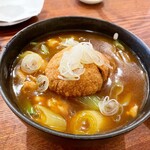
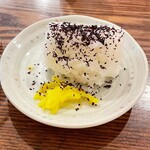
Jojo_koji
3.30
Visited around 7:30 pm on Friday night. The restaurant was about half full so I was able to get in without waiting. I tried the famous croquette soba for 1250 yen. The croquette was made of minced chicken, not potato like the usual croquette. It had a soft texture, probably because of the grated yam used as a binder. The soba itself was quite light and had a subtle flavor. It felt elegant and delicate. Thank you for the meal.
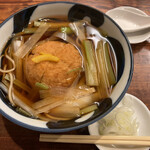
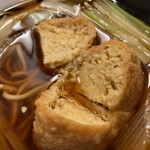
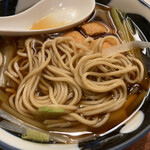
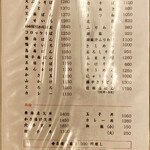
YTZ
3.30
The lunch set was great. The deep-fried sand lance was delicious. There were many other menu items that caught my eye, and I thought it would be nice to come back for drinks. The restaurant was spacious and comfortable. It wasn't crowded, so it was a perfect place for a break. I will definitely go back.
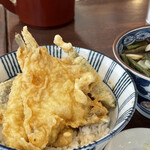
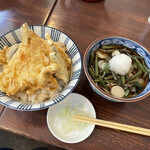
KIKI_poyo◡̈⃝︎
3.50
Visited a soba restaurant called Yoshida in Ginza to try their winter limited edition oyster soba until March. Arrived around 2 pm on a weekday. Initially, it was almost empty, but as it approached the last order time, 4-5 groups came in. The restaurant is spacious, so it didn't feel crowded. You can choose between Kanto-style and Kansai-style broth, but I chose the Kanto-style since it was oyster soba. The soba was simple but delicious, with large and plump oysters in a flavorful broth. The set also came with a delicious onigiri. Payment is cash only. Overall, a great place in Ginza to enjoy a late lunch, and they even offer a free onigiri during lunchtime. Highly recommended for soba lovers with some room in their stomachs.
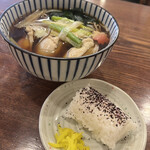
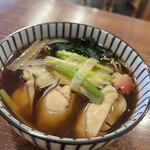
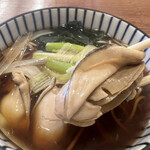
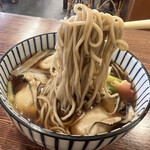
とし75624
3.30
I had been wanting to visit this restaurant for a while, so when my junior colleague and I felt a bit hungry after work, we decided to go. The ramen was a bit spicy at this late hour, but the soba was refreshing and delicious. The attentive service from the elderly staff members, being an established restaurant in Ginza, left a strong impression. I indulged in some hot sake with my soba, which was satisfying. It seemed like the soba couldn't be customized to personal taste, but that may be due to the late hour. I would like to visit again on another occasion.
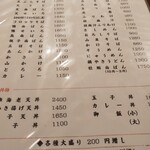
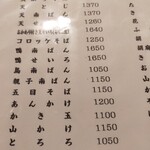
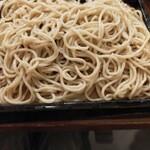
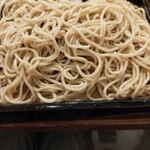
ゆってぃ4126
3.40
"Soba Restaurant Yoshida" in Ginza is a well-known soba restaurant that many people think of when they hear about Ginza. I recently visited this restaurant after being intrigued by reviews from food bloggers. I tried their Croquette Soba (1250 yen) which had a blend of flavors including Hokkaido, giving it a subtle aroma and a smooth taste. The croquette was actually a chicken meatball, not the typical potato croquette, and it was served hot so I had to break it apart while eating. The Edo-style slightly spicy broth soaked into the noodles, creating a delightful experience. Since I went during lunchtime, I also received a complimentary rice ball, which was fluffy and delicious. Yoshida has been a place where many people have been comforted with a variety of menu options and drinks after work. Thank you for the wonderful meal."
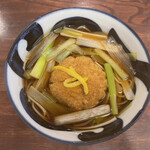
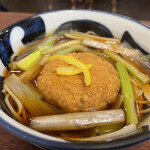
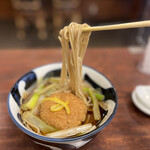
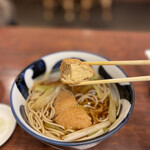
ジャッキー社長
3.70
Visited the super long-established soba restaurant "Soba-dokoro Yoshida" founded in 1885, a 6-minute walk from Ginza Station. Arrived around 6:30 pm on a weekday and there was no wait. Was able to enter smoothly. Ordered the Croquette Soba for 1,250 yen. It was served in about 10 minutes. The croquette was not fried potatoes, but a mixture of minced chicken and yam fried to look like a ganmodoki. It was delicious with the fragrant soba noodles, gentle dashi made from kombu and bonito flakes, and the umami of the minced chicken all coming together. Enjoyed it until the last bite. By the way, the Croquette Soba has been served since the restaurant's founding.
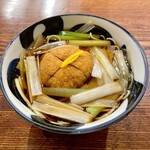
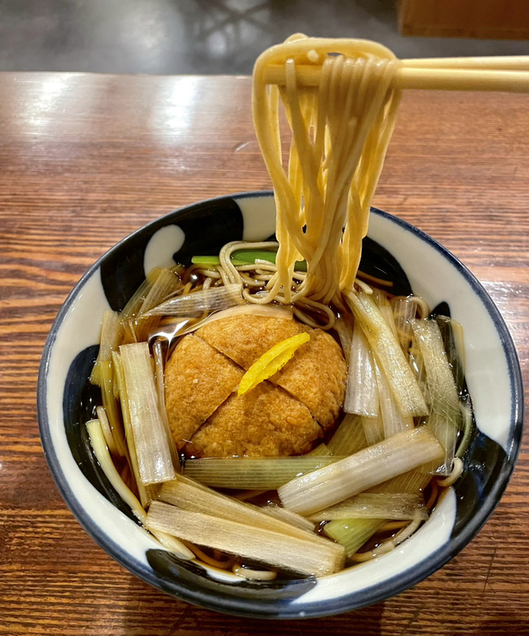
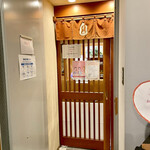

ginzatetsu
3.60
A long-established soba restaurant that has been around for over 130 years and is famous for its croquette soba. In the cold winter season, the popular dish is the Oyster Soba (1750 yen) that warms you up. You can choose between Kanto-style soy sauce broth (Kansai uses salt broth). The dish is topped with four plump oysters, plenty of green onions, and wakame seaweed, all neatly arranged. The oysters are fresh and delicious! It has been about 5 years since they relocated from their previous location. The old place had more atmosphere, but this new location is more convenient. The Croquette Soba (1250 yen) is a specialty here, featuring croquette-like chicken-filled balls.
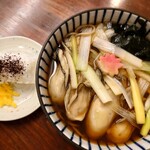
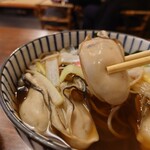
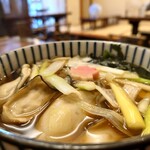
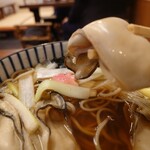
マッシュグルメ
3.40
Good evening! This is Mash. Today, I visited the long-established soba restaurant "Soba-dokoro Yoshida" located near the Ginza Corridor, founded in Meiji 18. Their specialty is croquette soba, but I ordered the limited-time Oyster Nanban today. I couldn't resist limited-time items, typical of a Japanese person (laughs). I also added a single croquette for good measure. You can choose between Kansai or Kanto dashi for the soba, and they recommend the Kanto style if you're adding croquette. The dish came with six large oysters from Sanriku, plump and with a strong sea flavor. The croquette was made with chicken, yam, and egg, more like a satsuma-age than the usual croquette. Honestly, it was okay without it. The dipping sauce was Kanto style, with a good soy sauce flavor but mild. The soba itself was average, nothing special, but easy to eat. The restaurant was relatively empty and served quickly, making it suitable for a busy lunchtime.




サカキシンイチロウ
3.50
When winter comes, I always think of "oyster soba". I love the kaki nanban from Fukudaya in Shibuya and the oyster soba from Yoshida in Ginza. When I visited Yoshida in Ginza, I ordered the oyster soba and was asked, "Would you like the Kansai-style or Kanto-style broth?" The Kansai-style broth is made with bonito flakes, kelp, and salt, while the Kanto-style broth has the added flavor of soy sauce. I always struggle to choose between the two. The Kanto-style broth has a refreshing acidity that pairs well with the oily tempura, while the Kansai-style broth has a gentle aroma that complements the natural flavor of the oysters. Today, I chose the Kansai-style broth, and the staff at the restaurant smiled and said, "I also like the Kansai-style broth with oysters." The restaurant quickly filled up with customers, and the atmosphere became lively. When the oyster soba arrived, it was served in a deep bowl with a clear broth. The dish included green onions, seaweed, maple leaf-shaped wheat gluten, and four large oysters that swayed gracefully in the transparent broth. First, I tasted the broth, which had a natural sweetness from the kelp and a rich umami flavor. The flavor of the oysters infused the broth, making it even more delicious. Next, I savored the oysters. Each plump oyster was placed on a lotus root slice, displaying its frilly black and white edges. The alluring appearance of the oysters captivated me, and I couldn't resist taking a bite. The oysters swayed gently on the lotus root slice, releasing a tantalizing aroma that tickled my nose. As I savored the oyster's weight on my tongue, I couldn't help but be enchanted by its smooth texture. When I bit into it, the oyster yielded with a satisfying squish, releasing a burst of delicious sea juice that melted in my mouth. The oyster was perfectly cooked, not too raw or too firm, with a velvety smoothness. The generous amount of green onions added a delightful crunch to the dish, complementing the silky texture of the oysters. The soba noodles were slightly thick, absorbing the broth and providing a smooth texture. The pickled plum rice ball that came with the lunch had a refreshing acidity and a pleasant aroma. Watching the broth slowly turn cloudy with the oyster's juices was a luxurious experience. Once again, I was able to enjoy my favorite oyster soba dish.
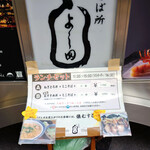

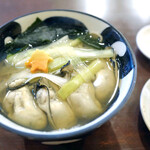
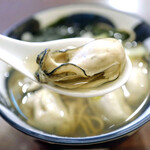
銀ぐる
3.50
Established for over 130 years, this soba noodle restaurant is a long-standing institution. While the location has changed in recent years, the quality of the soba noodles remains the same. A must-try dish here is the Croquette Soba (1250 yen), which is a unique twist on the traditional croquette using minced chicken instead of potatoes. This recipe has been passed down for over 130 years, originating from a desire to make croquettes more accessible to everyone. The taste is refined and elegant, with no greasy or heavy feeling often associated with fast food. The soba noodles themselves are not particularly outstanding, but they are perfect for everyday enjoyment. The broth is made from bonito and other ingredients, providing a refreshing yet satisfying flavor. In addition to soba noodles, the restaurant also offers dishes such as oyster soba and oyster hot pot during the winter season, making it a great place to enjoy with some drinks. The tamagoyaki (Japanese rolled omelette) is also delicious.
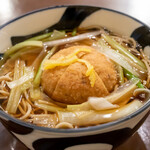
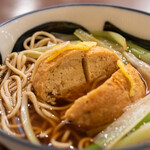
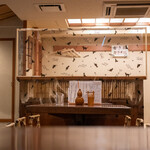
parisjunko
3.90
The long-established soba restaurant "Soba-dokoro Ginza Yoshida" in Ginza was newly reopened with a new name and location on February 12, 2016. The restaurant was founded in 1885. It is a well-known old and prestigious restaurant in Ginza that is a must-visit among the top 100 stores in the area. The restaurant is famous for introducing the "Croquette Soba" dish to the world. The first female owner, who loved Western food, came up with the idea for the dish. The name "Yoshida" is one of the old signs of soba restaurants in Tokyo. It started in Hamacho and moved to Ginza in 1895. The name originates from the tea master Yoshida Jishuken in the Genroku era. The soba noodles are made using homemade flour from a mill in Shimada, Shizuoka Prefecture. The dipping sauce is Edo-style, made with several ingredients including kombu and bonito flakes. The friendly staff, mostly mothers, provide excellent service. Despite preferring cold soba, the reviewer opted for the warm "Oyster Soba" due to the cold weather. Customers can choose between Kanto-style (soy sauce-based) or Kansai-style (salt-based) broth. The "Oyster Soba" comes with plump oysters, green onions, and seaweed on top of the chewy soba noodles. The oysters from Sanriku are flavorful and delicious, with a tasty oyster broth seeping through. The side dish of "Tawara Musubi" with seasoned rice is simple yet delicious. It is served with pickled radish. When asked about the "furiwake" mentioned on the menu, it was explained to be a combination of "kishimen" and "morisoba." A hot pot dish is also recommended for cold weather.
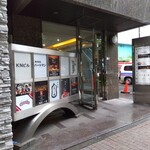
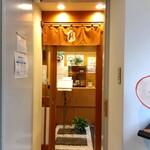
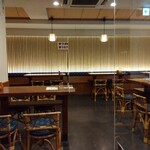
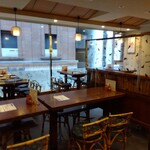
まんおじ
3.60
The wrapped-up bales are charming. I ordered the specialty croquette soba, which felt more like chicken meatballs than croquettes. It was satisfying. The flavor was well-balanced and delicious. The soba itself was average. The broth was sweet and savory, and very tasty. They also have izakaya dishes, so I would like to go there at night next time. The journey to soba shops in Tokyo continues.

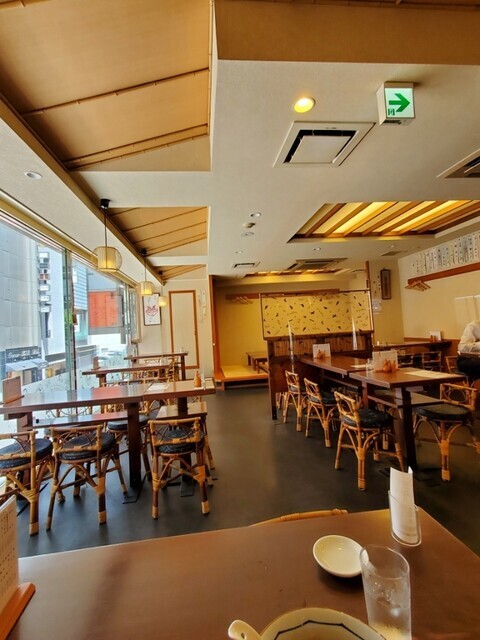
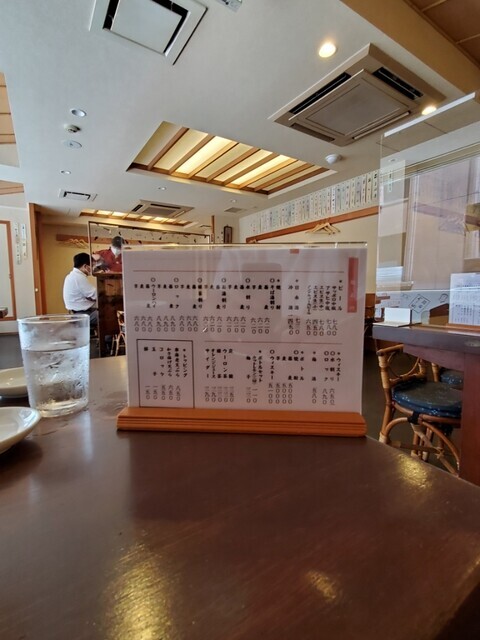
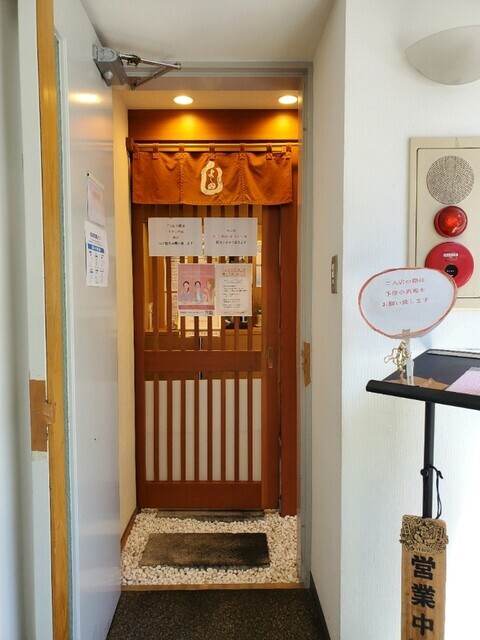
シォンイ
3.50
We took the elevator to the second floor and were able to enter the restaurant with minimal wait, about 10 minutes. We wanted to try the famous croquette soba, but ended up ordering the tempura soba instead. My partner had the beef udon that we saw on TV and heard was delicious. When I tried the croquette, I couldn't help but say "Wow!" It had a very Japanese taste to it, quite different from the usual croquettes you find elsewhere. It was elegant and delicious. It was also nice that the croquette was served separately from the broth. Thank you very much. It was a wonderful meal.
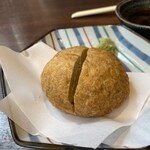
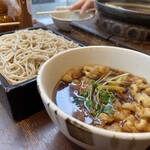
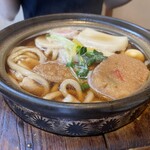
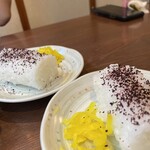
Email Login